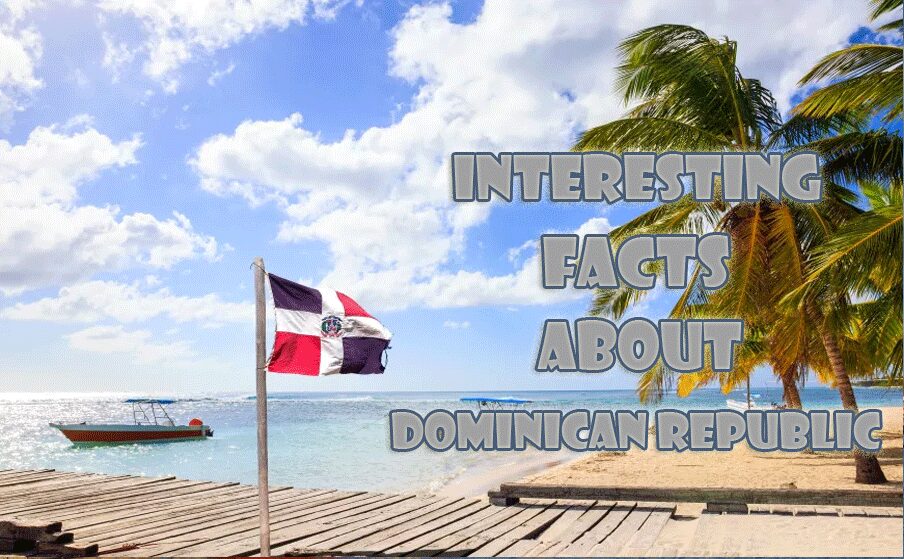The Dominican Republic is not only the paradise of the Caribbean, with white sand beaches and turquoise sea there is much more to its rich history, brilliant culture, natural wonders, charming residents and her are some interesting facts about Dominican Republic.
Interesting facts about Dominican Republic
- Christopher Columbus arrived on the island on December 5, 1492, where the Tainos had lived since the seventh century. It became the first permanent European settlement site in the Americas. Called Santo Domingo, it is the oldest continuously inhabited city and the first seat of the Spanish colonial government of the New World.
- Santo Domingo is the first capital of North and South America, the seat of the first Catholic cathedral, the first university and hospital. Some of the original buildings have been restored and can be visited in the Colonial City of Santo Domingo (Colonial Zone).
- The oldest cathedral in the world is located in Santo Domingo. The first stone of the cathedral was placed in the year 1514 by Diego Colón, son of Christopher Columbus.
- The Dominican flag is the only one that has a Bible in it. This was approved on November 6, 1844, this is one of the oldest flags in the world. It has its roots in the Haitian flag of the 19th century.
- Spanish is the official language of the Dominican Republic. It should also be mentioned that in tourist areas, knowledge of English, Italian, German and French predominates.
- The national sport of the Dominican Republic is baseball. Some of the best baseball players in the world are Dominicans.
- The Dominican Republic is credited with the creation and development of the merengue music style, which is a rhythmic dance music with an accelerated rhythm. Bachata, a form of music and dance that originated in the countryside and rural slums of the Dominican Republic, has become very popular in recent years.
- The Dominican Republic is known as the bread basket of the Caribbean, as it grows, cultivates the land and harvests almost everything that is served for breakfast, lunch and dinner. Some of the typical dishes you should try: it is the sancocho (a stew, with up to 7 different kinds of meat and vegetables), mangú (made with bananas, it is part of the typical breakfast), mofongo (made with fried plantains, garlic and chicharrón of pig).
- The Dominican Republic is located in the northwest part of the island of Hispaniola, the second largest island in the Greater Antilles and is the second largest country in the Antilles, after Cuba. Share the island in an average ratio of 2: 1 with Haiti. Pico Duarte is the highest peak of the Dominican Republic and of all the Caribbean islands, and is 3,098 meters or 10,164 feet high.
- In the Amber Museum of Puerto Plata is the famous amber stone with a prehistoric mosquito preserved inside, which can be seen in the box office success of Jurassic Park. Amber is a fossil resin from a tree found in only a few places in the world.
- The Larimar gemstone, also called “Stefilia Stone”, has a rare blue variety of the Pecto lita silicate mineral found only in the Dominican Republic. Its coloration varies from white, light blue, green-blue to dark blue.
- The Dominican Oscar de la Renta is one of the best-known fashion designers of the 21st century. Born in Santo Domingo, his clothes are worn by celebrities such as Jacqueline Kennedy, Nancy Reagan, Laura Bush, Hillary Clinton, Anna Wintour, Oprah Winfrey, Sandra Bullock, Emma Watson, Victoria Beckham, Cameron Diaz, Penelope Cruz, Sarah Jessica Parker, Jennifer Lawrence, Rihanna among many others.
- Director Francis Ford Coppola filmed scenes from El Padrino II in the capital of the Dominican Republic, Santo Domingo.
- The national flower is La Rosa de Bayahibe and the national tree is La Caoba. The national bird is the cigua palmera or “Dulus dominicus”.
- The location of the supposed tomb of Columbus is located at the Columbus Lighthouse in Santo Domingo. It is not a working beacon used for navigation ships, but at night it projects light in the form of a cross that are so powerful that they can be seen from Puerto Rico, about 200 miles away. A cathedral in Seville, Spain, also claims that it has the remains of Columbus, and the DNA test has failed to resolve conclusively the question of where Columbus ended. It is also thought possible that at some point their remains were divided, so some of their bones ended up in each of the two cities (Santo Domingo and Seville).












